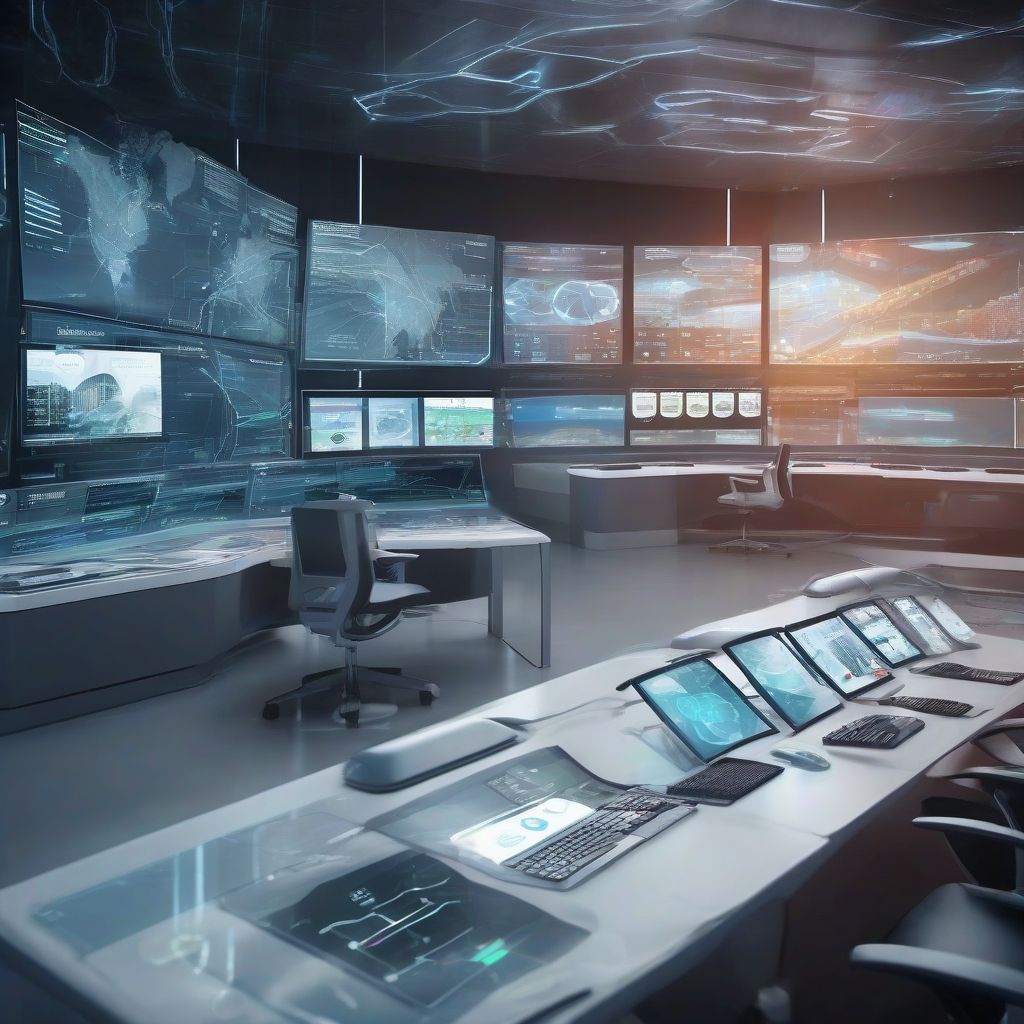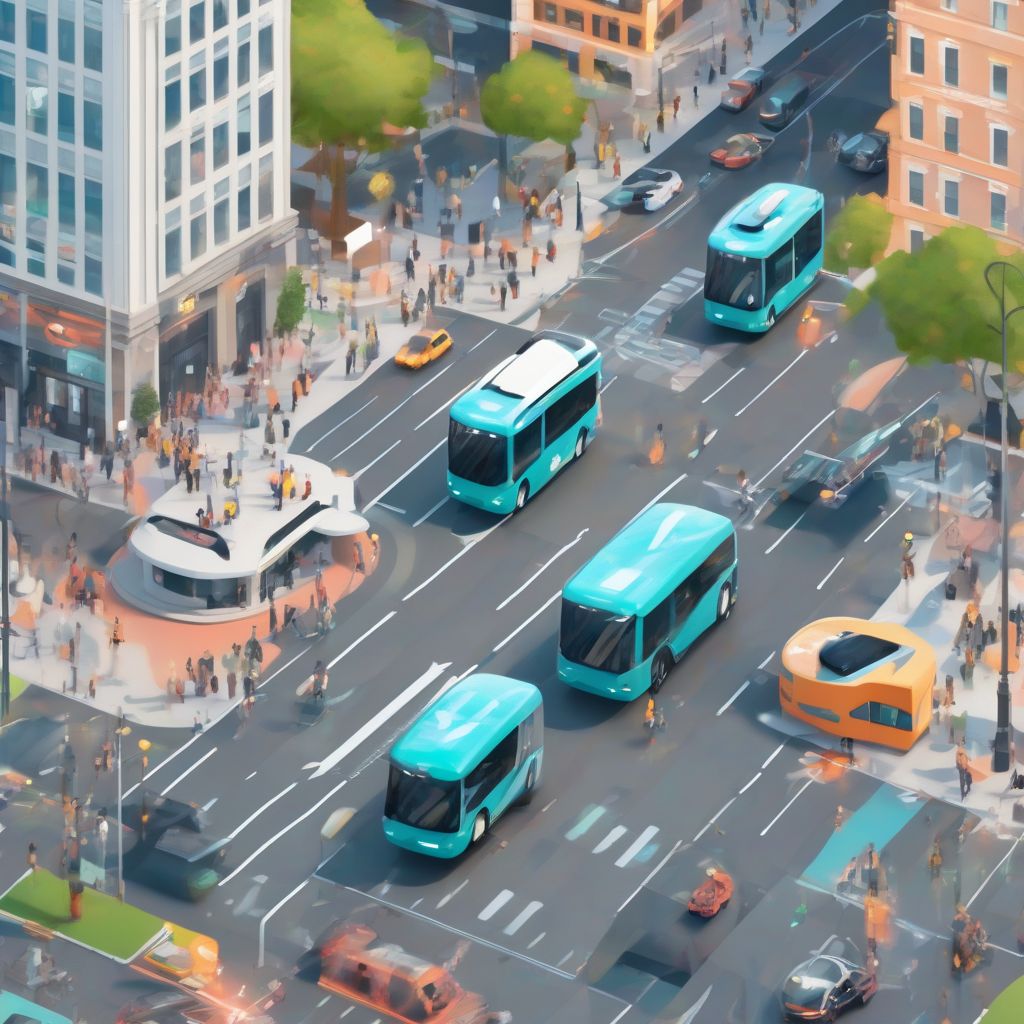Imagine a city where traffic flows seamlessly, resources are optimized for efficiency, and citizens are empowered through technology. This isn’t a scene from a futuristic movie; it’s the promise of smart cities, driven by the relentless pace of technological advancement. But how exactly is technology transforming urban landscapes into intelligent ecosystems? Let’s delve into the exciting realm of smart cities and explore the innovations shaping their development.
The Building Blocks of Smart Cities: Where Technology Takes the Lead
At the heart of every smart city lies a foundation of interconnected technologies working in synergy. Here’s a closer look at the key players:
1. Internet of Things (IoT): The Sensory Network
Imagine a network of sensors spread throughout a city, collecting data on everything from traffic flow to air quality. This is the power of IoT, the invisible threads connecting devices and enabling them to communicate. Traffic lights adapt to real-time traffic conditions, smart garbage bins signal when they’re full, and air quality sensors provide insights for environmental control – all thanks to the interconnected nature of IoT.
2. Big Data & Analytics: Making Sense of the Information Deluge
The vast amounts of data collected by IoT sensors are meaningless without the ability to analyze and extract valuable insights. That’s where big data analytics comes in. By applying sophisticated algorithms to massive datasets, city planners can identify patterns, predict future trends, and make data-driven decisions to optimize city operations. From forecasting traffic congestion to predicting potential infrastructure failures, big data is the brainpower behind a smart city’s intelligence.
 Smart City Data Analytics
Smart City Data Analytics
3. Artificial Intelligence (AI): Powering Intelligent Automation
AI takes smart city automation to the next level. By mimicking human intelligence, AI algorithms can analyze complex data patterns, learn from experience, and make autonomous decisions. Think self-driving public transportation systems that optimize routes in real-time, AI-powered security cameras that detect anomalies and enhance public safety, or smart grids that dynamically adjust energy distribution based on demand patterns – all made possible by the power of AI.
The Transformative Impact: How Technology is Reshaping Urban Life
The convergence of these technologies is already revolutionizing various aspects of city life, paving the way for:
1. Enhanced Sustainability: Building Greener Cities
Smart cities are inherently designed with sustainability in mind. By monitoring environmental factors like air and water quality, smart cities can implement targeted solutions for a cleaner, healthier environment. Smart grids optimize energy consumption, reducing waste and promoting the use of renewable energy sources. Intelligent irrigation systems conserve water by adjusting to real-time weather conditions and soil moisture levels.
2. Improved Mobility: Navigating the Urban Jungle
Traffic congestion is a major pain point in many cities, but smart city solutions offer a way out. Real-time traffic management systems, enabled by IoT sensors and AI, optimize traffic flow, reduce congestion, and shorten commute times. Smart parking systems guide drivers to available parking spots, eliminating the need for aimless circling and reducing emissions.
 Smart City Mobility Solutions
Smart City Mobility Solutions
3. Enhanced Citizen Engagement: A Voice for the People
Smart cities empower citizens by giving them a platform to actively participate in urban development. Mobile applications provide access to city services, real-time information, and channels to report issues directly to authorities. This two-way communication fosters transparency, accountability, and a sense of community ownership in shaping the future of the city.
The Road Ahead: Challenges and Opportunities in the Smart City Revolution
While the potential of smart cities is undeniable, several challenges need to be addressed:
- Data Privacy and Security: The vast amounts of data collected by smart city technologies raise concerns about citizen privacy and data security. Implementing robust cybersecurity measures and ethical data governance frameworks is crucial to building trust and ensuring responsible data usage.
- Digital Divide: Ensuring equitable access to technology and digital literacy is essential to prevent a digital divide, where certain demographics are left behind in the transition to a smart city. Bridging this gap requires inclusive policies and initiatives that empower all citizens with the necessary skills and access.
- Interoperability Challenges: Integrating various technologies from different vendors can pose significant interoperability challenges. Establishing open standards and collaborative frameworks is essential for seamless data exchange and system integration.
Despite these challenges, the future of smart cities is bright. As technology continues to evolve, we can expect even more innovative solutions that address urban challenges, improve quality of life, and create more sustainable, efficient, and citizen-centric urban environments.
Embracing the Smart City Revolution: A Glimpse into the Future
The smart city revolution is well underway, driven by the transformative power of technology. As we embrace the potential of interconnected systems, data-driven insights, and intelligent automation, we move closer to a future where cities are not just places we live, but intelligent ecosystems that adapt to our needs and enhance our lives. The journey towards building smarter, more sustainable, and citizen-centric urban environments has just begun, and the possibilities are limitless.
[amazon bestseller=”smart cities”]
